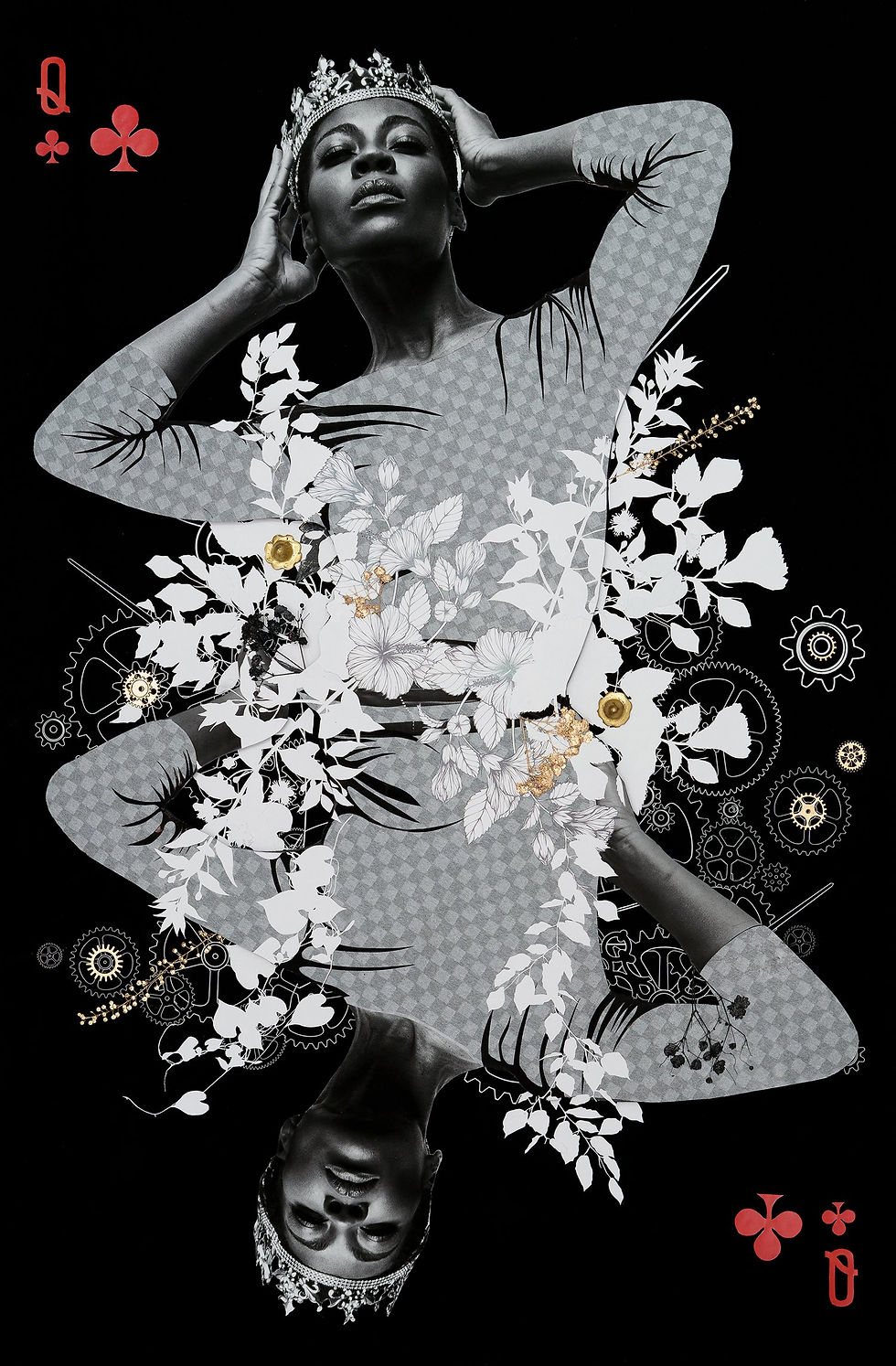Capturing the Trinidadian Spirit: Che Lovelace
- Anthony Roberts

- Feb 13, 2022
- 3 min read

Beach Figures, 2016
Che Lovelace
Acrylic and dry pigment on board panels
50 x 60 in
Che Lovelace (b. 1969) is a Trinidadian painter and surfer, who’s spirit for life comes through in his vibrant, Carnival-inspired work.
“I was drawn to an artist’s life for the freedom it gives me, and the difficulty of being an artist. I like doing things that are difficult to keep me engaged. I get bored easily.”

Lovelace has been a working artist since 1993. For most of his career, he has been a consistent staple of the Trinidadian art scene. While he exhibited some in New York and Paris, for the most part his market and personal focus has been in Trinidad. That’s, in part, an intentional decision by Loveless to stay in his home. “Being somewhere far from the centers of art has always been part of the challenge of living here, which I feel is my place and where I want to work from.”
The physical restrictions imposed by the pandemic and the subsequent uptick in the use of digital tools to communicate and source talent, led a "discovery" of Lovelace's work by art curators and galleries. In March 2021, he held his second ever solo exhibition in the United States, which was a huge success. This year, he has another solo exhibition with the same gallery.
But Lovelace, who’s now 53, has been steady in his approach despite his newfound audience. His primary motivation for being an artist remains freedom.

Port of Spain, Trinidad
Lovelace grew up in Matura, a small, rural town in the northeastern part of the island of Trinidad. His father, writer Earl Lovelace, is of African descent and his mother is of Indian descent.
Given his father’s profession, Lovelace grew up in creative circles, and identified early on as a creative. His first notion of becoming a visual artist came in high school, around 14 years old, when his art professor Jackie Hinkson took an interest in his work. Technically, Lovelace was not the best, but the professor noticed a “spirit” in his work and encouraged him to continue making art.
Lovelace decided to attend art school in the neighboring Caribbean island of Martinique at L’Ecole Regionale d’arts Palstiques. After he graduated from art school in 1993, he returned to Port of Spain, Trinidad where he has lived ever since.

Makeshift Fruit Stall at no.4, 2021
Che Lovelace
Acrylic paint and dry pigments on board panels
50 x 60 in
Shortly after Lovelace returned to Trinidad, he started to experiment with cutting up his paintings and sewing them back together. The sewing process was slow and deliberate which contrasted to the fast, gestural style of painting he’d used to that point. Over the years, though his style has evolved, this deliberate approach to painting has remained. He works on some pieces for up to one and half years before completion.
Lovelace enjoys painting vibrant, dancing figures, inspired by Carnival. This a huge, annual tradition, which takes place late Feb/early Mar, was birthed from celebrations of emancipated peoples after slavery ended in the former British colony.
He also enjoys bringing life to inanimate objects through still life paintings. “I always feel art gives life to supposedly lifeless things. That is sometimes the most critical thing to do.”
When he steps to a canvas, Lovelace tries to enter with an open and playful mindset. He never wants to feel like he’s reproducing something he’s already done. “I like to feel like I’m on a new journey each time.”
In addition to being a painter, Lovelace is an avid surfer. He served as president of the Trinidad’s Surfing Association and has represented Trinidad and Tobago in numerous international competitions.
Lovelace talks about his practice in this studio visit:
References:



Comments